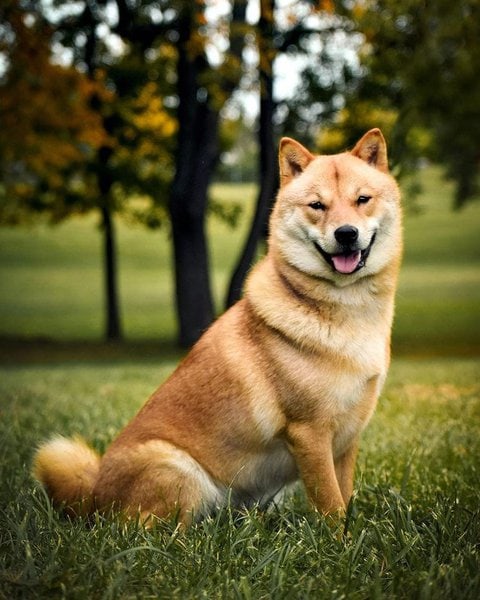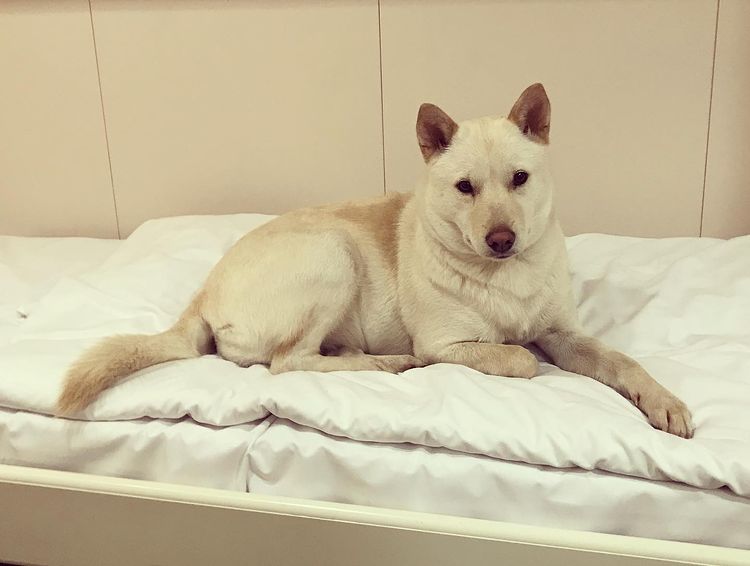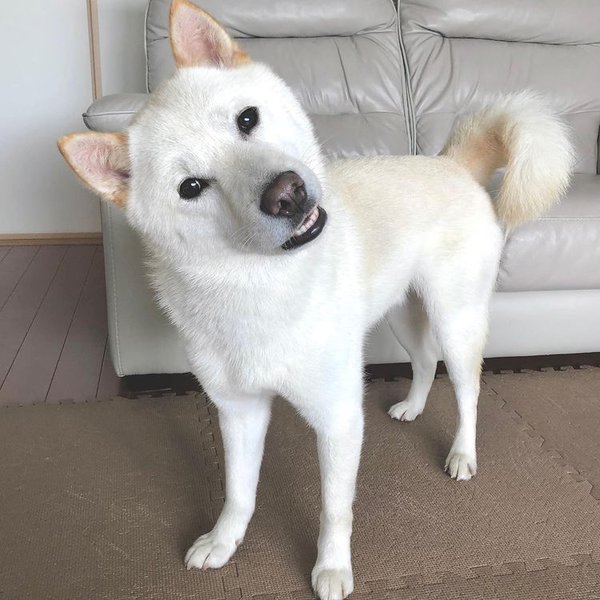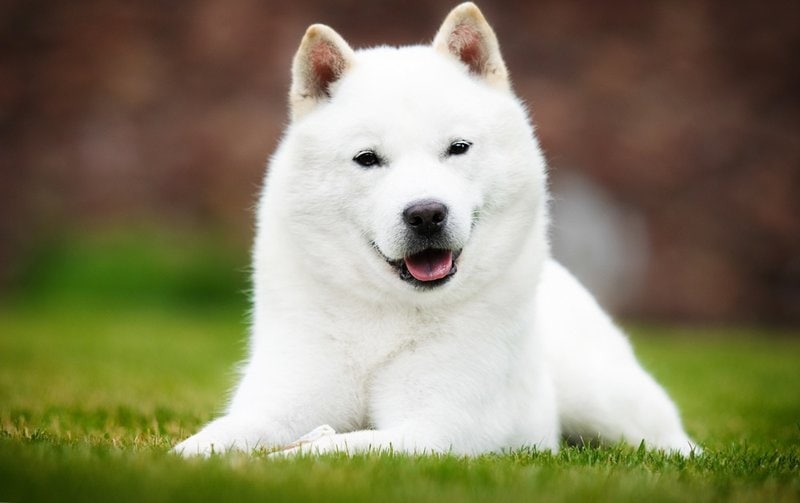A watchdog is necessary if you live in an unsafe area and are an adamant canine lover. I will offer you a complete breed guide of a watchdog that qualifies—the Hokkaido. So, is the Hokkaido dog an excellent watchdog?
Yes, this rare Japanese breed, commonly known as an Ainu dog, possesses innate abilities and qualities that make it a perfect guard dog. The canine is attentive, intelligent, and highly committed to you and your family. Plus, this furry friend can protect you and your loved ones from strangers and wild animals.
One of the oldest and the most respected native breeds, the Ainu dog originated from Hokkaido, Japan, more than 8,000 years ago. Locals used this fearless and daring dog breed to catch fish and hunt bears. After staying hidden for years, a British national named Thomas Blankinston discovered and named this dog Hokkaido-Inu in 1869.
How Big Do Hokkaido Dogs Get?

The Hokkaido dog gets as big as 18 to 22 inches tall, weighing 45 to 65 lbs. This breed is considered a medium-size dog compared to the other six Japanese native breeds: Shiba Inu, Shikoku, Kishu Ken, Kai Ken, and Akita.
The female Hokkaidos referred to as “bitches” are a bit smaller when compared to the males. Females weigh between 44 and 64 lbs.
> Physical Appearance
You can quickly distinguish a Hokkaido by its bushy tail set high and curled on its back and its small triangular and pointy ears. The Hokkaido is alert and ready to listen to your commands.
It has a muscular and rectangular body, rounded rib cage, deep chest, dark brown eyes, and giant paws. The shape of the Ainu’s head resembles that of a fox. Its legs are aligned and strong.
> What Kind Of Dog Is A Softbank Dog?
The Softbank dog, popularly known as the Hokkaido dog, is affectionate and playful with adults and kids. This canine friend’s keen sense of direction and smell will allow them to locate you, despite the separation of long distances.
Not only will the Softbank dog protect you with its life, but this breed is a gentle and playful companion. This dog breed is fond of howling, especially when happy and excited, which most people misinterpret as aggression.
> Coat Colors And Patterns
The thick coat of the Hokkaido dog is double layered. This Ainu dog has a soft inner coat and a thick topcoat. Its coat comes in different colors: gray, black, brindle, white, sesame, and red.
How Long Do Hokkaido Dogs Live?

The lifespan of the Hokkaido dog ranges from 11 to 13 years.
> How Can I Increase My Dog’s Lifespan?
If acquiring a Hokkaido is one of the items on your bucket list, it’s essential to remember that no matter how attached you get to this affectionate dog, your furry companion still won’t live forever. But with proper care, this breed can certainly live beyond 13 years.
However, some factors affect your furry friend’s lifespan. They include exercise frequency, good nutrition, good health, and veterinary care, genetics, and interbreeding. You can help your dog live longer by giving your Ainu a comfortable life and preventing their exposure to toxins and pollutants.
These furry friends also need emotional connection and mental stimulation. Play games like fetch and take them outdoors for plenty of physical exercises to explore the surroundings.
> Which Is The Most Common Health Concern For Hokkaido?
Although the Hokkaido dog’s health is generally good, they’re still prone to some hereditary health problems. Hokkaido’s most common health concern is luxating patella, sometimes called a “trick knee,” and hip dysplasia.
In hip dysplasia, the thigh bone fails to fit properly into the hip joint. Some dogs may exhibit limping behavior and discomfort on one or both hind legs. It may be difficult to tell when your Hokkaido has hip dysplasia, so take your pooch to the vet if you’re concerned.
A luxating patella could cause lameness eventually if the kneecap is not surgically repaired to be re-aligned in the early stages. Consult your vet for the next steps if you notice abnormal movement in your Hokkaido dog.
> Common Health Concerns
Other health concerns your canine friend is prone to are anxiety, Collie eye anomaly, heart murmurs, idiopathic seizures, pica, and psychogenic polydipsia.
> How Can I Prevent These Health Concerns Early?
Visiting the vet regularly and closely monitoring your canine friend will help you notice any early signs of health problems before they escalate.
Also, buy your Hokkaido dog from a reputable and trusted breeder to reduce the chances of getting a dog with health problems. Most breeders do a background check on the parent dogs and avoid breeding the two dogs if they have severe health issues.
How To Take Care Of Your Ainu Dog?
Caring for your Hokkaido dog often is essential for their well-being, healthy appearance, and hygiene. You can care for your dog by following these tips:
> Exercise Routine
Having an exercise routine for your canine companion is necessary. Since this canine companion is very active, ensure that the Ainu dog goes for walks at least two times a day and exercises between 30 to 60 minutes to stay in great shape.
Most dogs like to be in warm places during the cold seasons, but your Hokkaido does not. This breed’s two-layer coat helps your four-legged companion withstand the winter seasons in cold climates. So, you can indulge in fun activities like snowboarding, hiking, and so on with this super active bundle of fun.
Some outdoor routine exercises include games of fetch, swimming, mental stimulation obedience tricks, dog sports, and the like. Some of the indoor exercise routines include treadmill walking, hide-and-seek, and stair jogging.
> High-Quality Diet
Your Hokkaido needs high-quality nutrition to be at its best. Feed your Ainu dog 2 to 2⅔ cups of food rich in proteins, vitamins, and minerals two times a day. Alternatively, for a more nutritious diet, try Pet Plate for food dogs will certainly love and freshly made meals approved by vets.
When choosing the best diet for your super active companion, it’s necessary to know that a dog’s digestive system doesn’t handle carbohydrates well. Feeding your dog carbohydrates puts a lot of strain on your furry companion’s digestive system and can cause serious health problems.
You can give your Hokkaido dog multivitamins but only feed them the vitamins meant for dogs, not humans. Vitamin A and Omega-3 are examples of multivitamin supplements to help boost coat and skin health. Always seek your vet’s guidance to avoid feeding the wrong dose.
Another helpful tip is to avoid overfeeding the dog, which could lead to obesity. Reduce the number of treats and also avoid leaving food around during the day.
> Use Dental Water Additives
Vets highly recommend using dental water additives in your dog’s water bowl. Dental water additives specially made for dogs have enzymes that break down plaque and tartar, eliminating bad breath and improving oral health.
Pour a few drops of mouthwash into your dog’s bowl daily, and your dog’s breath will be fresh. Also, take your furry friend once a year to have their teeth cleaned by a professional.
Are Hokkaido Inu Good Guard Dogs? Temperaments Of Hokkaido Dogs
Yes, Hokkaido dogs are good guard dogs. The Ainu dog will protect you and your family at all costs; its innate sense of smell and hunting instincts play a significant role in this.
Additionally, this furry friend makes a great companion, so if you’re suffering from anxiety or emotional disturbance, this energetic and playful breed is a big comfort.
The intelligence and problem-solving skills of this breed allow it to perform any task you assign. Ainu’s alertness makes it easy for you to train, and it can quickly learn from you. You can teach your canine friend impressive tricks like rolling over, shaking hands, playing dead, spinning, barking on your command, standing on their hind legs, and many more.

> Is The Hokkaido Breed Friendly?
This breed, from the descendants of hunters, is ideal for a large family because they are so friendly and affectionate. Hokkaido dogs are very social, super active, and love to be around people who love them.
A big yard suits them better than living in an apartment because they like to play outside. Fortunately, if your house space isn’t enough to accommodate them, they can also live outdoors as they have a two-layered coat that protects them during the cold seasons.
You can teach your four-legged canine friend to be social from a young age to avoid being too hostile towards strangers it sees as a threat. Additionally, teaching your Ainu dog how to be with strangers can quickly lead them to relate well with people they don’t know, and over time, the hostility will subside.
Do Hokkaido Dogs Smell? Grooming Tips For Hokkaido Dogs
No, although the Hokkaido dogs don’t like bathing, they rarely smell. This canine breed is known to have a thick double-layered coat that takes a lot of time to dry after bathing, so avoid bathing your canine friend daily. Since it loves swimming, you can scrub its fur gently when it’s in the water.
> Are Hokkaido Dogs Hypoallergenic?
No, Hokkaido dogs are not hypoallergenic. This breed of dog is known to shed all year round.
So if you or your loved ones are hypersensitive, I would not recommend keeping this breed of a dog. However, suppose you are determined to keep this breed, despite the allergic reactions you have.
In that case, there are measures I can advise you to take to reduce the effects of hypersensitivity. They include bathing and grooming your dog, vacuuming the house, brushing your dog’s coat daily, and keeping the Hokkaido away from your bedroom and living room.
> What Measures Can Reduce Allergic Reactions To Hokkaido Dogs?
Bathing your canine companion on a regular basis often reduces fur shedding. When bathing your canine friend, I recommend using Paws & Pals 6-In-1 Oatmeal Dog Shampoo; its soapless formulation consisting of natural ingredients will not irritate your dog’s eyes and leave your dog’s coat soft and shiny.
Regular grooming of your Hokkaido ensures better dog smell, flea removal, reduced risk of ear and skin infections, early detection of health problems, and a healthier coat that sheds less. Plus, dog grooming and bathing strengthen the bond between you and your doggie.
Brushing Hokkaido’s thick double coat is part of grooming. Brushing helps distribute the natural essential oil, remove dirt from the coat, and reduce the need to bathe your dog every day. Brush your dog by placing the brush close to the dog’s skin, then brushing gently, finding the knots, and teasing them with the brush.
For this purpose, I recommend the Furminator Undercoat Tool. It comes with an ergonomic handle that enables smoother brushing with each brush. This keeps each brushing session shorter and less of a hassle.
To avoid dander floating around the house, vacuum every corner of your house with a quality vacuum cleaner regularly, especially after every brushing session. Finally, make sure your bedroom and living space are off-limits, as these are areas where you certainly do not want dog dander to be floating. Fortunately, Hokkaido dogs love the outdoors.
Related Questions
How Much Does A Hokkaido Dog Cost? As a rare Japanese dog breed, the Hokkaido Dog costs an average of $1,000. This cost excludes the shipping costs. Before buying a Hokkaido, you should also calculate what other costs you will need to incur in a year, including vaccines, toys, nutrition, pet insurance, preventative medications, and pet supplies. Determining the price will help you make an informed decision.
Do Hokkaido Dogs Swim? Yes, Hokkaido dogs love to swim. Just like most dogs, the Ainu also has a certain level of intuitive swimming ability, so you can train your furry friend to swim, and the dog will learn very quickly. Hokkaido’s facial structure is perfect, unlike other dogs such as the Pit Bull, Dachshund, Pug, and other breeds whose facial structure makes swimming a challenge.
Is The Hokkaido Dog Related To Shiba Inu? The Hokkaido dog and the Shiba Inu are among the six original Japanese breeds. The other four native Japanese breeds are Akita, Kai, Kishu, and Shikoku. Of the six breeds, Shiba is the smallest dog, while Akita is the largest. The remaining four breeds, Hokkaido, Shikoku, Kai, and Kishu, are medium size.





